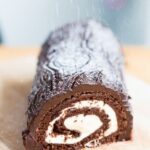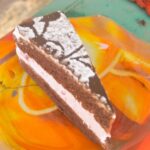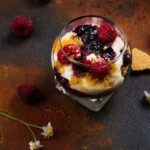Are you looking to elevate your baking skills and learn how to decorate a white cake like a pro? Whether you’re preparing for a special occasion or simply want to add a touch of elegance to your dessert, decorating a white cake can be an enjoyable and rewarding experience. In this article, we will explore the essential ingredients and tools you’ll need, as well as basic and advanced techniques for creating stunning designs.
We’ll also delve into tips for achieving a professional look, adding flavors and fillings, and troubleshooting common decorating issues. By the end of this guide, you’ll be ready to showcase your beautifully decorated white cake with confidence.
To start off, let’s talk about the key components needed to decorate a white cake. From piping bags and tips to fondant and edible decorations, having the right tools and ingredients is crucial for achieving your desired look. We’ll discuss how these elements work together to enhance the appearance of your cake while also providing guidance on where to source them.
Once you have all the necessary supplies, it’s important to properly prepare your white cake for decoration. This involves leveling and icing the layers, ensuring a smooth surface for your designs. We’ll walk through these steps in detail, offering helpful tips along the way to make the process as seamless as possible. Whether you’re new to cake decorating or looking to expand your skills, mastering these foundational techniques is essential for achieving professional results.
Essential Ingredients and Tools for Decorating
For anyone looking to decorate a white cake, having the essential ingredients and tools is crucial for success. Some of the essential ingredients for decorating a white cake include buttercream frosting, fondant, food coloring gels, edible glitters, and various decorative sprinkles or pearls. These items can be easily found at any baking supply store or online. It’s important to have a variety of colors and textures to enhance the visual appeal of the cake.
In addition to ingredients, having the right tools is equally important. Essential tools for decorating a white cake include piping bags and tips for creating decorative borders and designs, offset spatulas for smoothing frosting, a turntable for easy access to all sides of the cake, and a bench scraper for achieving clean edges. These tools will make the decorating process much easier and help achieve professional-looking results.
Another important tool to have when decorating a white cake is a cake leveler or large serrated knife to ensure even layers when stacking multiple cakes. This not only helps with visual presentation but also makes it easier to create uniform decorations on each layer. With these essential ingredients and tools in hand, anyone can successfully decorate a beautiful white cake that looks as good as it tastes.
Preparing the White Cake for Decoration
When preparing a white cake for decoration, it is essential to start with a well-baked and properly cooled cake. The first step is to level the top of the cake using a serrated knife or a cake leveler to ensure a flat surface for decorating. Once leveled, brush any loose crumbs off the cake with a pastry brush to create a clean canvas for your decorations.
After leveling the cake, it’s important to decide how you want to fill and stack your layers. This could involve spreading frosting, ganache, or fruit preserves between the layers for added flavor and moisture. For a neater appearance when slicing the cake, it’s recommended to create a dam of frosting around the edge of each layer before adding fillings.
Another key aspect of preparing the white cake for decoration is applying a crumb coat. This thin layer of frosting seals in any loose crumbs on the surface of the cake, preventing them from interfering with the final decorative layer of frosting. To apply a crumb coat, spread a thin layer of frosting over the entire surface of the cake and chill for about 15 minutes before applying the final layer of frosting.
Once these steps are completed, your white cake will be ready for decorating using various techniques such as piping, fondant sculpting, or edible decorations that will enhance its visual appeal. Remember that proper preparation is crucial for achieving professional-looking results when decorating your white cake.
Basic White Cake Decorating Techniques
Once you have prepared your white cake for decorating, it’s time to start adding some flair to it. One of the simplest yet elegant ways to decorate a white cake is by using buttercream frosting. You can spread a smooth layer of buttercream on top of the cake and add simple piped designs around the edges. Another classic technique is using fondant to cover the entire cake for a sleek and polished look.
Simple piping techniques can also take your white cake from ordinary to extraordinary. Using various tips and techniques, you can create beautiful borders, flowers, and other designs with just a piping bag and some colored icing. If you’re feeling more adventurous, try experimenting with different textures using spatulas or combs to create unique patterns on the cake’s surface.
For those who prefer a more minimalist approach, consider adding edible embellishments such as fresh flowers, fruit slices, or edible pearls. These decorative elements can add a pop of color and visual interest to your white cake without overwhelming its purity.
| Decorating Techniques | Description |
|---|---|
| Buttercream Frosting | A smooth layer of buttercream with simple piped designs. |
| Fondant Covering | Using fondant to cover the entire cake for a polished look. |
| Piping Techniques | Creating borders, flowers, and designs with colored icing. |
| Edible Embellishments | Additions like fresh flowers or fruit for visual interest. |
Advanced White Cake Decorating Techniques
Once you have mastered the basic white cake decorating techniques, you may want to take your skills to the next level with some advanced decorating techniques. One technique to try is creating intricate piping designs using a piping bag and various tips. You can make beautiful flowers, intricate lace patterns, and elaborate borders with just a little practice.
Another advanced technique is using fondant to cover the cake and create 3D decorations. Fondant allows for endless creativity, from sculpting lifelike flowers and figures to creating elegant ribbons and bows. With the right tools and a bit of patience, you can achieve professional-looking results that are sure to impress.
For those looking to add a touch of luxury to their white cake, consider incorporating edible gold leaf or edible metallic paints into your decorations. These stunning embellishments can elevate a simple white cake into an exquisite work of art that will dazzle your guests.
| Advanced Technique | Description |
|---|---|
| Piping Designs | Create intricate flowers, lace patterns, and borders with a piping bag and various tips. |
| Using Fondant | Cover the cake in fondant and create 3D decorations such as flowers, figures, ribbons, and bows. |
| Edible Gold Leaf or Metallic Paints | Incorporate luxurious embellishments to elevate the cake into an exquisite work of art. |
Tips for Achieving a Professional Look
Use Quality Ingredients
One of the key factors in achieving a professional look when decorating a white cake is to use high-quality ingredients. This includes using fresh eggs, pure vanilla extract, and high-quality flour and sugar. Using these premium ingredients will not only enhance the flavor of your cake but also contribute to its overall appearance.
Practice Proper Piping Techniques
To achieve a professional-looking decoration on your white cake, it’s essential to practice proper piping techniques. Whether you’re using buttercream frosting, royal icing, or ganache, mastering the art of piping is crucial. Practice making different designs and patterns on parchment paper before applying them to your cake.
Attention to Detail
Another tip for achieving a professional look is paying attention to detail. This means ensuring that your cake layers are level, smoothing out any imperfections in the frosting, and carefully placing any decorative elements such as flowers or fondant accents. Taking the time to focus on these small details will elevate the overall appearance of your white cake decoration.
By following these tips, you can achieve a professional look when decorating a white cake, making it perfect for any special occasion or event. The next time you prepare a white cake for decoration, remember to use quality ingredients, practice proper piping techniques, and pay attention to every detail to create a stunning and professionally decorated masterpiece.
Adding Flavors and Fillings to Enhance the White Cake
When it comes to decorating a white cake, adding flavors and fillings is a great way to enhance the overall taste and appeal of the cake. Here are some options for adding flavors and fillings to take your white cake to the next level:
- Fruit Fillings: Fresh fruit purees or compotes can be used as fillings between the cake layers, adding a burst of fruity flavor. Common options include strawberry, raspberry, lemon, or passion fruit.
- Citrus Zests: Incorporating citrus zests such as lemon, lime, or orange into the cake batter or frosting can add a bright and refreshing flavor profile to the white cake.
- Extracts: Adding a few drops of vanilla, almond, coconut, or other flavored extracts to the cake batter or frosting can infuse the cake with delicious aroma and taste.
In addition to these flavor-enhancing options, consider complementing your white cake with delicious fillings such as pastry cream, chocolate ganache, or flavored buttercream. These fillings not only add richness and moisture to the cake but also provide an extra layer of flavor that pairs well with the simplicity of a white cake.
Take your time experimenting with different flavor combinations and fillings until you find the perfect match for your white cake. Whether you prefer classic pairings like vanilla bean pastry cream in a vanilla cake or more adventurous combinations such as coconut-lime curd in a coconut-flavored cake, adding flavors and fillings is sure to elevate your decorated white cake to new heights.
Troubleshooting Common Decorating Issues
Even with the best planning and preparation, decorating a white cake can come with its own set of challenges. It’s important to know how to troubleshoot common decorating issues to ensure that your final product looks as good as it tastes.
One common issue when decorating a white cake is frosting that is too runny or too thick. If your frosting is too runny, try adding more powdered sugar to thicken it up. On the other hand, if your frosting is too thick, you can add a small amount of milk or cream at a time until it reaches the desired consistency.
Another common problem that decorators encounter is air bubbles in the frosting. To prevent this, try tapping the cake gently on the counter after frosting to release any trapped air. You can also use a small offset spatula to smooth out any air bubbles in the frosting.
Lastly, achieving smooth sides and edges on a white cake can be difficult for some decorators. To fix this issue, try using a bench scraper or offset spatula to smooth out the sides while rotating the cake on a turntable. If there are any imperfections, you can always cover them with additional decorations like piped buttercream flowers or fondant accents.
By knowing how to troubleshoot these common decorating issues, you’ll be better prepared to create a beautifully decorated white cake that will impress both visually and taste-wise.
Conclusion
In conclusion, decorating a white cake can be a fun and rewarding process that allows you to showcase your creativity and skills. By using essential ingredients and tools, preparing the cake properly, and learning basic and advanced decorating techniques, you can create a stunning masterpiece that will impress your friends and family. It’s important to remember that practice makes perfect, so don’t be discouraged if your first attempts aren’t flawless.
To achieve a professional look, consider adding flavors and fillings to enhance the taste of the white cake. Whether it’s a classic vanilla or almond flavor, or something more unique like lemon or raspberry, adding a delicious filling can take your cake to the next level. Additionally, using high-quality ingredients such as fresh fruit or edible flowers for decoration will elevate the overall presentation of your cake.
Lastly, if you encounter any decorating issues along the way, don’t panic. Troubleshooting common issues such as frosting consistency or uneven layers is all part of the learning process. With patience and persistence, you’ll soon be able to overcome these challenges and proudly showcase your beautifully decorated white cake at any special occasion. So go ahead, gather your supplies, get creative, and let your imagination run wild as you decorate your next white cake.
Frequently Asked Questions
How Do You Decorate a Plain White Cake?
Decorating a plain white cake can be as simple or as elaborate as you desire. One approach is to use colorful frosting to pipe on designs or create rosettes, swirls, or other patterns.
Another option is to add edible flowers or fresh fruit as a decorative touch. You can also consider using fondant to create a smooth and professional-looking finish for a more polished appearance.
How Do You Make a Plain Cake Look Fancy?
Making a plain cake look fancy involves adding decorative elements that elevate its overall presentation. This can be achieved by incorporating visual appeal through the frosting technique, such as creating intricate designs with piping or using different colors to make the cake visually striking.
Additionally, embellishments like edible pearls, sprinkles, or gold leaf can add a touch of luxury and sophistication.
How to Decorate a Cake for Beginners?
For beginners looking to decorate a cake, it’s important to start with simple techniques and gradually build skills over time. One easy way to begin is by practicing basic frosting application using an offset spatula or piping bag.
As proficiency grows, experimenting with various decorative elements like edible glitter, chocolate shavings, or candy accents can provide an opportunity to develop creativity and learn new techniques step by step.

Welcome to my blog about home and family. This blog is a place where I will share my thoughts, ideas, and experiences related to these important topics. I am a stay-at-home mom with two young children. I hope you enjoy reading it! and may find some helpful tips and ideas that will make your home and family life even better!





